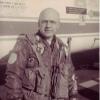
Sign in to follow this
Followers
0

RealAir Griffon Spitfire Flight Test Report
By
dhenriques, in MS FSX | FSX-SE Forum


By
dhenriques, in MS FSX | FSX-SE Forum